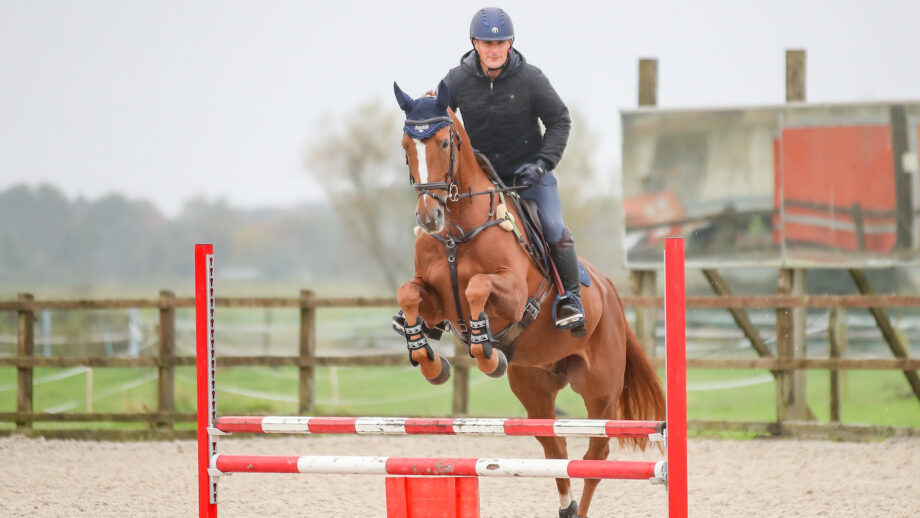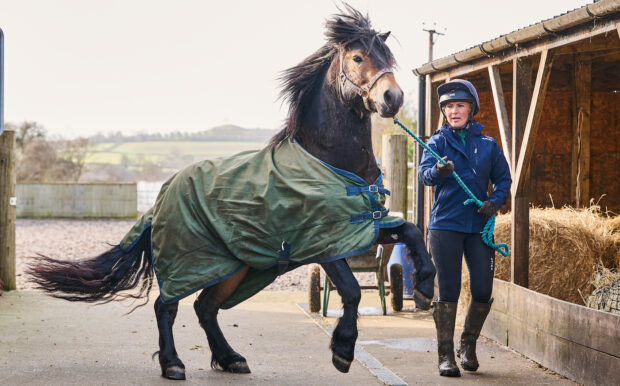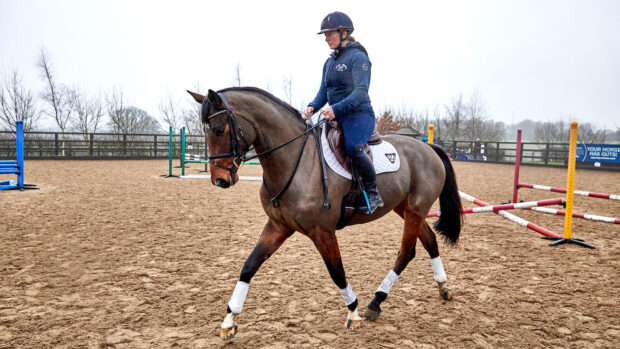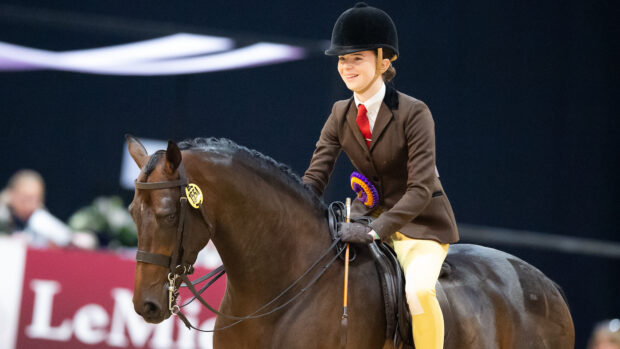Guesswork doesn’t figure in a top athlete’s jump training regime, and it’s no different for five-star event rider Alex Bragg. With a yardful to ride every day, you don’t dilly-dally and, as he tells me, efficiency is the name of the game.
“Every time I go in the school to ride through an exercise, I want to optimise the session,” he says. “When you’re competing, you’re supporting the horse to deliver the best possible performance on the day. At home, you have to allow the horse to work out the answer to the questions you’re asking – it’s the biggest difference between training and competition.”
Repetition is key to a horse learning from its mistakes and finding confidence in the correct answer. Even so, it’s not about blithely running through an exercise over and over.
“You’re never riding through and hoping it gets better; it’s about analysing and working out what you have to do to deliver a better ride,” Alex continues. “Real-time feedback from the horse informs the adjustments you make.”
Alex Bragg jump training exercise: power and wait
Working on: rider’s lower leg and balance, the horse’s ability to hold the rhythm and smoothness as a combination

The set-up: five fences each a stride apart. Credit: Elli Birch/Bootsandhooves
Alex sets up a line of five upright fences with a stride between each. The fences are built with two parallel poles a couple of holes apart.
“When I jump uprights, I have the two rails close together at the top,” explains Alex. “It’s to help the horse focus. If you want to test him, you can spread the poles apart and make the fence look bigger. But we aren’t trying to trick the horse, we’re trying to help him.”
While five elements are best to get the message across, riders may be limited by the size of their arena.
“It’s not a speed exercise and you don’t need a huge approach,” remarks Alex. “So you could do five elements in a 60m arena or adapt to a smaller arena by having a very small fence, like a canter rail coming in, and trot round the corner.”
Aims
This exercise is gymnastically demanding and teaches the horse to maintain power and consistency over all five elements. Alex is riding a novice mare to demonstrate, but it can be done with horses jumping at any level, with the height of the fences adjusted as appropriate.
“The horse has to remain forward to produce a good jump, but if she rushes, she will run herself into the base of the jump,” says Alex. “Using lots of jumps teaches the horse to be straight, forward and powerful; we use uprights to tell them to power, wait, power, wait.”
Riders should be mindful that they don’t try to over-help.
“The responsibility of the rider is the presentation to the fence and the balance on exit. We don’t try to jump the fence for them, as doing that can throw the horse out of balance on landing.
“We have to have control over our lower leg and must not collapse in our body because we’ve thrown it over the jump. It’s a common mistake.”
Warm-up
Before jumping, Alex recommends taking the poles away to canter down the line, through the wings.
“Remember, the jumps aren’t canter poles,” he explains, “so with the poles left in, your canter would be so big that you’d rush them.”

Warm up the horse thoroughly so that they are switched on with a punchy, forward canter. Credit: Elli Birch/Bootsandhooves
Instead, build up the elements from one to five.
“You can progress quite rapidly keeping them small, but make sure the horse learns he can comfortably go down a line of five elements before you challenge him in another way.
“Try not to ask too many questions in one go, especially if they are new ones. Break it down, ask one question, then marry up the two. In this case, it’s low to start with, build the line, then go bigger.”
Ride it
Make sure your horse is switched on and fine-tuned to start this Alex Bragg jump training exercise. He meets the line in a forward yet punchy canter.
“I’m looking at the middle of the final element and trying to feel the horse underneath me,” comments Alex as he turns to approach. “I stay passive and let her operate, but don’t collapse, offer no restrictions from the body, just use my legs to keep her straight. I support with my left or right leg on, depending what’s happening with her body.”
It’s easy to see how mentally locked in the mare is as she powers down the line, really articulating her shoulder on take-off. Alex never touches the rein through the elements – it’s a clear marker of the elite rider’s security and balance, and demonstrates that this is exactly the exercise to cultivate this kind of rider strength.

Maintaining balance as the mare powers neatly down the line. Credit: Elli Birch/Bootsandhooves
The grid takes a lot out of the horse and it’s up to the rider to read how their horse is performing and offer appropriate support. When Alex comes down the line again, she’s a little tired.
“I need a bit more leg now to replace the energy she’s losing,” he says.
This time, she over-responds to Alex’s leg to knock the third rail – this serves to produce a very careful jump over the fifth element.
“See how she recovered and learnt from that?” Alex says. “Now, if I just deliver her straight and give her some energy back in the middle, we’ll see what happens.”
They finish the session on a smooth and accurate run down the five fences. Alex’s wife, Simmone, who’s been adjusting fences and dog sitting, says: “That was good. I think we’ll keep you riding a bit longer yet.”
Guide rails on the ground

The two poles are close together at the top to encourage the horse to focus, while the white boards act both as a ground line and to channel them to the middle of the fence (as an alternative to V-poles, which Alex is “not a fan of”). Credit: Elli Birch/Bootsandhooves
Beneath each upright is a configuration of three dressage boards – one parallel to the base of the fence to act as a groundline, two angled out to the sides.
“I’m not a fan of V-poles,” says Alex. “You don’t get them in competition, and they really affect how the horse jumps at the take-off spot.
“Young horses tend to drift one way or the other, so using ground poles this way gives them a really obvious channel. It focuses them in the middle of the jump without interfering with the way they jump it.”
You may also enjoy reading…

*Exclusive* How Alex Bragg’s training exercise uses turns to master straightness while jumping

*Exclusive* Sharp and snappy: Gemma Stevens’ gridwork exercise that will teach your horse to be both careful and bold

*Exclusive* Improve your horse’s footwork while jumping and have fun with Gemma Stevens’ gridwork exercise

*Exclusive* Improve your horse’s rideability and straightness with Harry Meade’s three-fence jumping exercise

*Exclusive* ‘Small fences help produce expressive, accurate flying changes’: how Harry Meade mixes dressage with cavaletti




